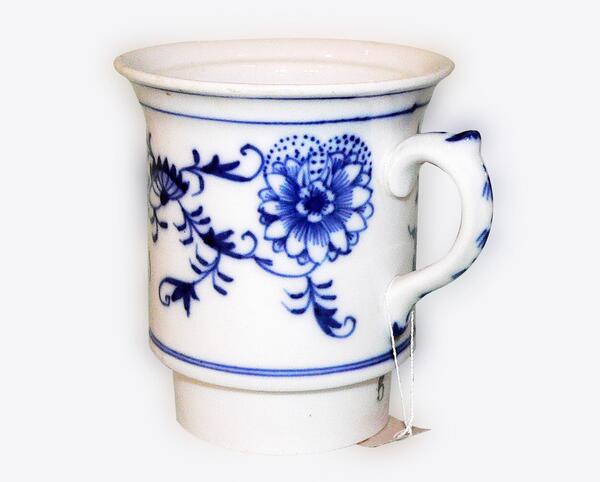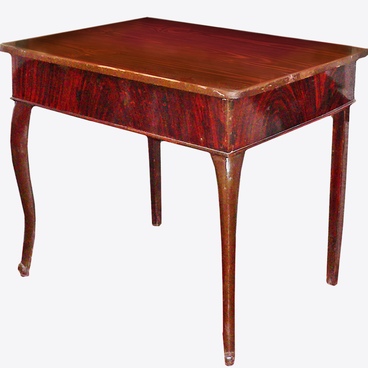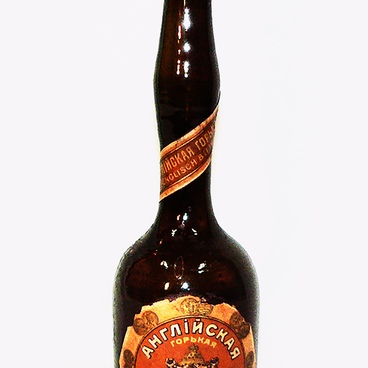This ceramic brewing mug was given a rectangular shape with a flared top rim by the artisan. It is covered with white glaze and decorated with a deep blue floral pattern in the Gzhel style. The bottom is in the form of a sieve - criss-crossed slots form a kind of weave.
Dishware for brewing tea appeared relatively recently, in the 14th century. Until that time in China, tea leaves were boiled in water in small saucepans. During the reign of the Ming dynasty, people noticed that if you just brew tea with steeped boiling water, rather than boiling the tea itself, then the quality of the finished drink was much better. Thus, in the 14th century, the first teapots appeared in a form in which they exist today. Much later, tea strainers and mugs with slots appeared.
In Russia, by the beginning of the 19th century, a type of tea etiquette had developed. Moscow was the ‘trendsetter’ in terms of tea consumption.
Dishware for brewing tea appeared relatively recently, in the 14th century. Until that time in China, tea leaves were boiled in water in small saucepans. During the reign of the Ming dynasty, people noticed that if you just brew tea with steeped boiling water, rather than boiling the tea itself, then the quality of the finished drink was much better. Thus, in the 14th century, the first teapots appeared in a form in which they exist today. Much later, tea strainers and mugs with slots appeared.
In Russia, by the beginning of the 19th century, a type of tea etiquette had developed. Moscow was the ‘trendsetter’ in terms of tea consumption.



